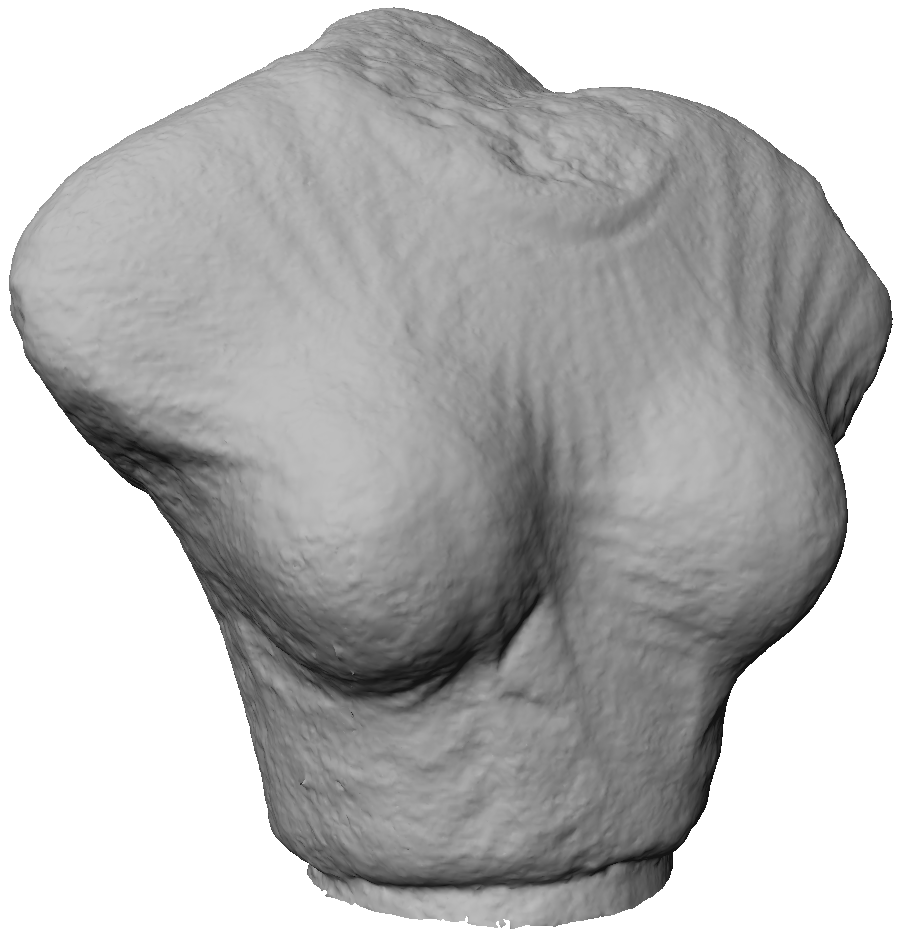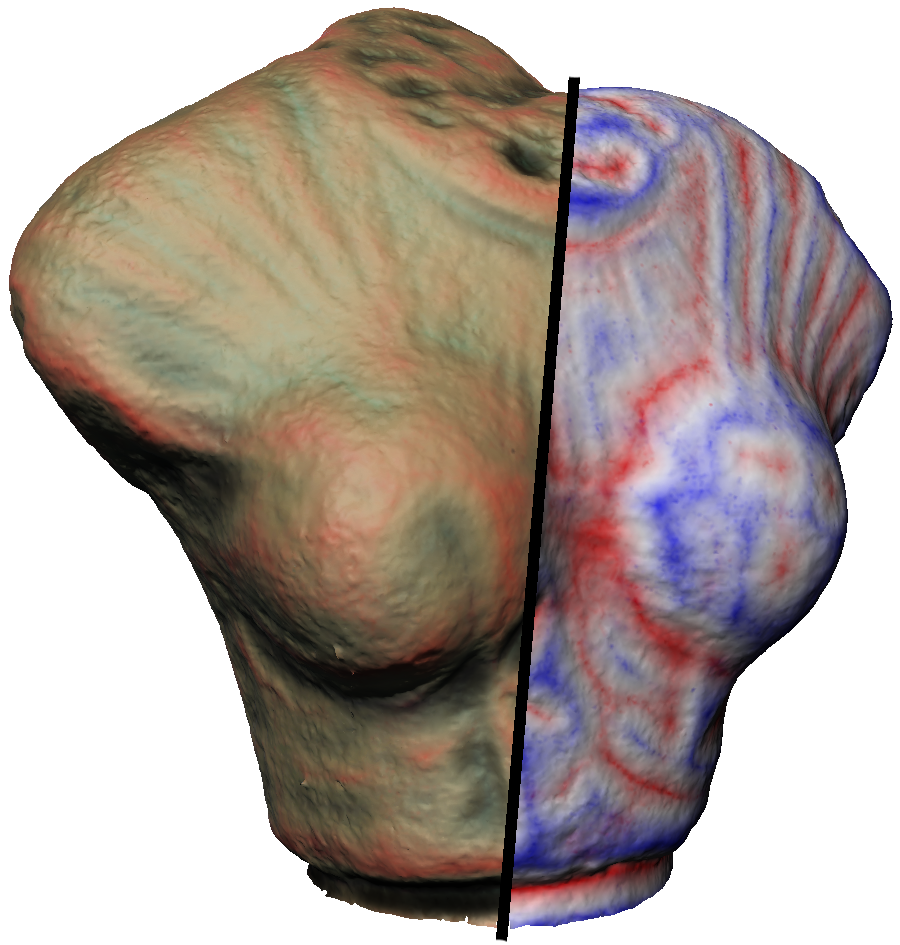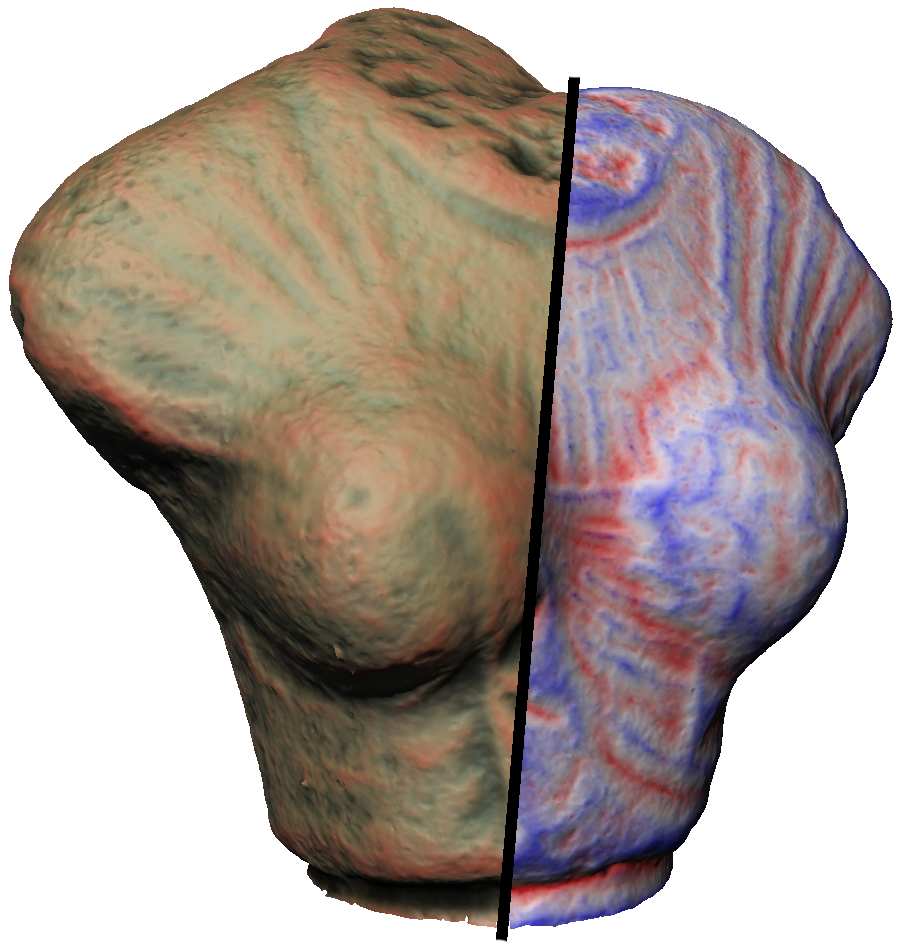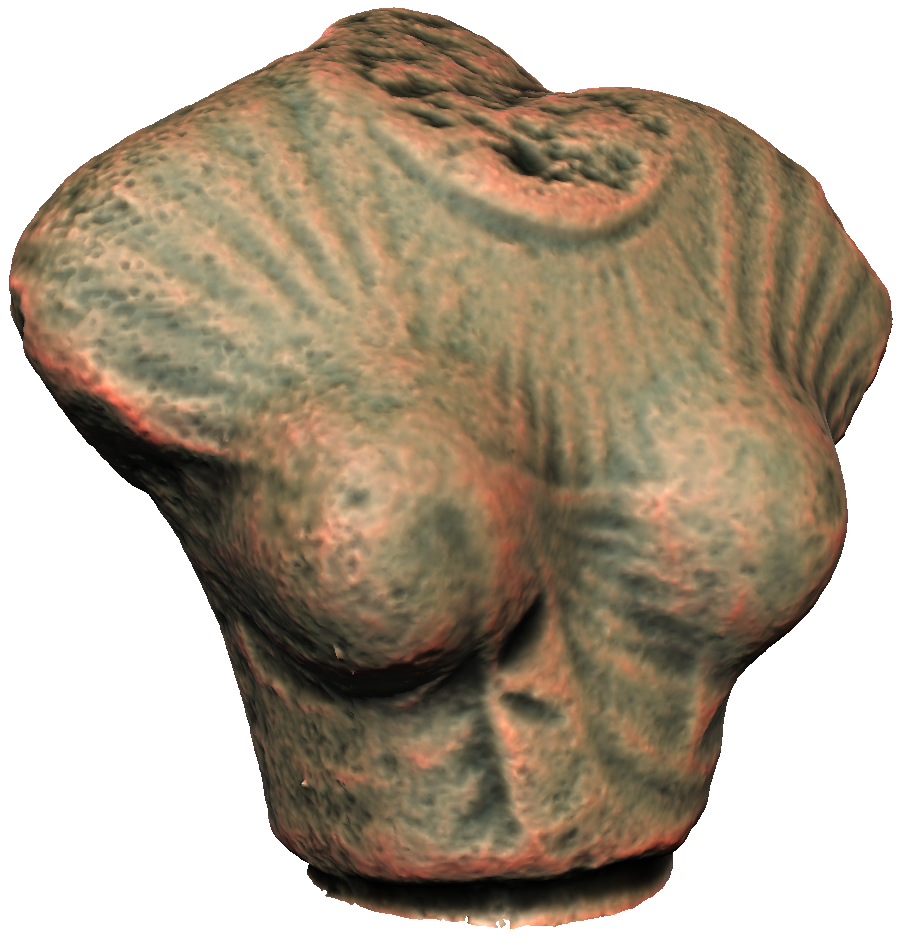Section:
New Results
Axis 3: Rendering, Visualization and Illustration
Surface Relief Analysis for Illustrative Shading
Figure
10. Given a detailed surface (a), we analyze its relief to locate relief features in the neighborhood
of each surface point (b). We focus on three types of features: convexities, concavities, and inflexions, shown on the right half
with blue, red and white colors respectivelly. Extracted information is used to assign them different shading functions: here
we use three different lit-spheres, shown on the left half. An additional accessibility shading effect helps convey relief cavities.
Features are extracted and combined at multiple scales to depict relevant relief details (c). Finally, radiance scaling is added to
enhance the relief based on the curvature at each feature (d). |
Rendering techniques are often used to convey shape in scientific illustrations.
We present an analysis technique that leverages the complexity found in detailed 3D models for illustrative shading purposes.
Given a smooth base surface with relief, it locates relief features (concavities, convexities and inflections) around each surface point and at multiple scales, using cubic-polynomial fitting.
This object-space, per-vertex information is then used to guide a variety of shading techniques including normal enhancement, feature visualization, accessibility shading and radiance scaling.
Thanks to this approach, features at multiple scales are easily combined, filtered and shaded, allowing users to explore surface relief in real-time (cf. Figure 10 ).






